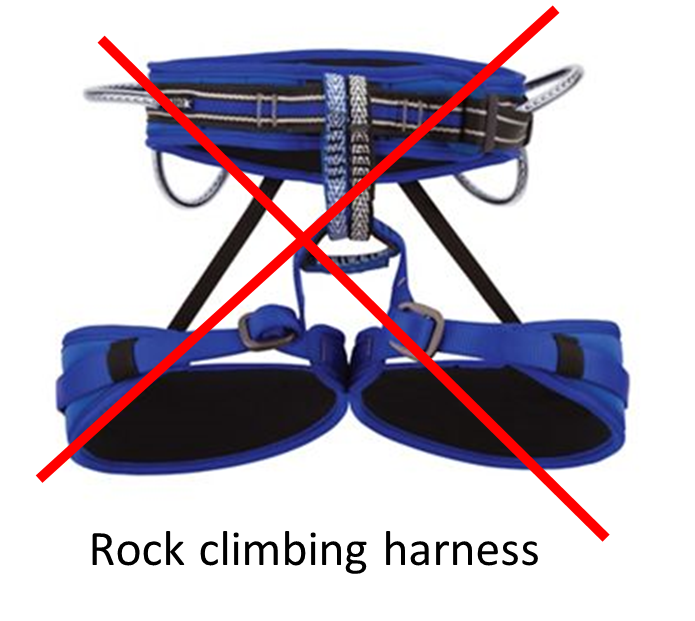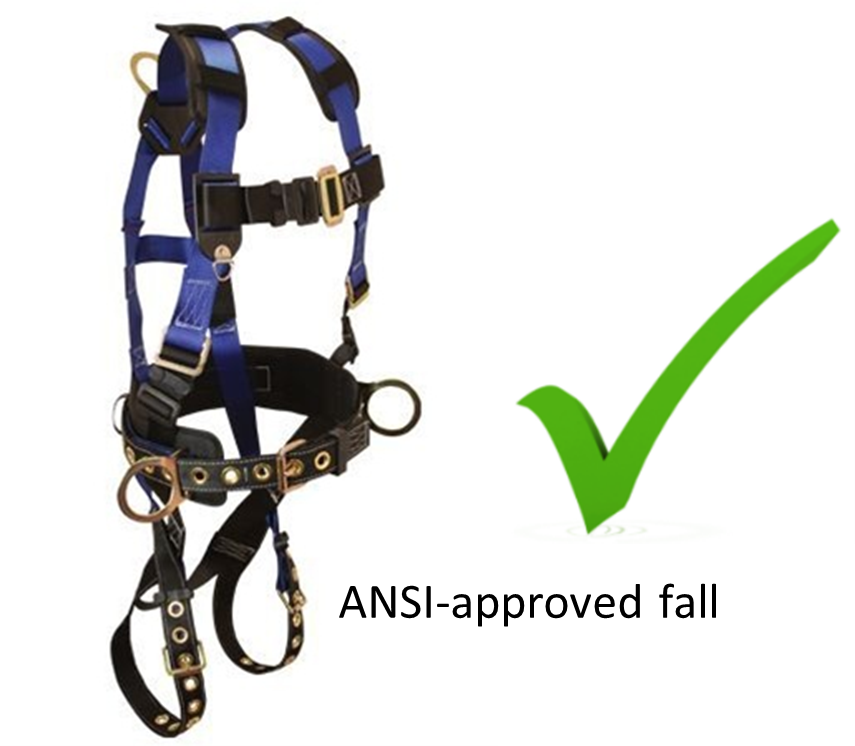Workplace falls are both common and preventable. Falls from heights is the second-leading cause of unintentional workplace death in the U.S. However, a worker doesn’t need to fall from a high level to suffer injuries and lost work time. Falls can happen anywhere; even office workers can be injured from slipping or tripping on a level surface.
At the UW, the category “slips/trips/falls” has been among the leading causes of injuries to UW personnel (including medical center personnel) every year.
EH&S provides the following information and resources for University units and personnel to identify potential risk factors and implement best practices for fall prevention.
How do falls occur?
There can be unsafe conditions in the workplace and unsafe actions that can lead to a fall.
Unsafe conditions
- Unguarded edges
- Open holes
- Improper guardrails
- Damaged equipment (e.g., ladders, stairs, safety equipment, etc.)
- Slippery conditions
- Unmarked elevation changes
Unsafe actions
- Working at heights without fall protection or fall prevention methods (e.g., handrails)
- Improper use of ladders
- Leaning over guardrails
Slips and trips
Both slips and trips result from some an unintended or unexpected change in the contact between the feet and the ground or walking surface.
Good housekeeping, quality of walking surfaces (flooring), and proper footwear are critical for preventing fall incidents.
Slips happen where there is too little friction or traction between the footwear and the walking surface. Common causes of slips are:
- Wet or oily surfaces
- Occasional spills
- Weather hazards
- Loose, unanchored rugs or mats
- Flooring or other walking surfaces that do not have same degree of traction in all areas
Trips happen when your foot collides (strikes, hits) an object causing you to lose balance and, eventually fall. Common causes of trips are:
- Obstructed view
- Poor lighting
- Clutter in your way
- Wrinkled carpeting
- Uncovered cables
- Bottom drawers not being closed
- Uneven walking surfaces (steps, thresholds)
Good housekeeping is fundamental for preventing falls due to slips and trips. It includes:
- Cleaning up all spills immediately
- Marking spills and wet areas
- Mopping or sweeping debris from floors
- Removing obstacles from walkways and always keeping walkways free of clutter
- Securing (tack, tape, etc.) mats, rugs and carpets that do not lay flat
- Closing file cabinet or storage drawers
- Covering cables that cross walkways
- Keeping work areas and walkways well lit
- Replacing non-working light bulbs and switches
Without good housekeeping practices, any other preventive measures such as installation of sophisticated flooring, specialty footwear or fall prevention training will never be fully effective.
Changing or modifying walking surfaces is the next level of preventing slips and trips. Adding resilient, non-slippery flooring prevents or reduces foot fatigue and contributes to slip prevention measures.
Options include recoating or replacing floors, installing mats, adding pressure-sensitive abrasive strips or abrasive-filled paint-on coating, and using metal or synthetic decking. Even with these measures, it is critical to remember that high-tech flooring requires good housekeeping as much as any other flooring.
In workplaces where floors may be oily or wet, or where workers spend considerable time outdoors, prevention of fall incidents should focus on selecting proper footwear. Properly fitting footwear increases comfort and prevents fatigue which, in turn, improves personnel safety.
Because no footwear exists with anti-slip properties for every condition, you should consult the manufacturers' recommendations when selecting footwear.
Best practices to avoid workplace falls
- Have physical barriers and guardrails to prevent falls from heights.
- Use scaffolding if a guardrail is not feasible.
- Use proper fall arrest system such as a full body harness, self-retracting lanyard, and approved anchor point.
- Use ladders properly.
- Choose the right ladder for the job – size and type.
- Keep three points of contact when climbing.
- Do not lean to one side while on a ladder.
- Set the ladder at the proper angle/ratio.
- Secure the ladder before using.
- Post a fall hazard warning sign in areas where a fall hazard exists.
- Inspect fall protection equipment before each use.
- Never use equipment not rated or made for fall protection.
Reduce the risk of slipping on wet flooring.
- Take your time and pay attention to where you are going.
- Adjust your stride to a pace that is suitable for the walking surface and the tasks you are doing.
- Walk with the feet pointed slightly outward.
- Make wide turns at corners.
Reduce the risk of tripping.
- Keep walking areas clear from clutter or obstructions.
- Keep flooring in good condition.
- Always use installed light sources that provide sufficient light for your tasks.
- Use a flashlight if you enter a dark room where there is no light.
- Make sure that things you are carrying or pushing do not prevent you from seeing any obstructions, spills, etc.
Resources
Units and departments can use the Walking-Working Surfaces Inspection Checklist to identify areas or conditions for potential slip and trip hazards, especially in office and general work areas.
Refer to the UW Fall Protection Program Manual for information and resources that all units/departments can use to address potential fall hazards. This manual includes information on regulations, resources, and training requirements for personnel who use ladders, fall protection gear, powered mobile lifting equipment and other equipment, or work on scaffolding. Units/departments must ensure required inspections are conducted and personnel complete required training.
Read the frequently asked questions below, which may help when you need to work at heights, even for a short time in your office, in a campus building, outside, or at home.
National statistics on workplace falls
Statistics show that the majority (67%) of falls happen on a level surface resulting from slips and trips. The remaining falls (30%) are from a height, such as falls from ladders, roofs, down stairs or from jumping to a lower level.
National injury and fatality statistics show four fall-related OSHA violations ranked high in 2019, 2020, and 2021. The fall-related violations include:
- Fall protection
- Scaffolding
- Ladders
- Fall protection training
According to OSHA, the data reported appears to split evenly between construction and general industry.
Frequently asked questions
In large areas, consider using a mobile ladder that is safer to ascend and descend. It also provides a more stable standing surface, which is important if you are lifting or lowering large, heavy or awkward items.

Alternatively, a scissor lift or personnel lift can be used instead of a ladder. Training is required prior to use.


No. Non-ANSI approved fall protection equipment, such as rock-climbing harnesses and associated gear is not allowed. A rock-climbing harnesses is not the same as an ANSI-approved full body harness.
The use of ANSI-approved fall protection equipment is required at the UW when working at heights.

